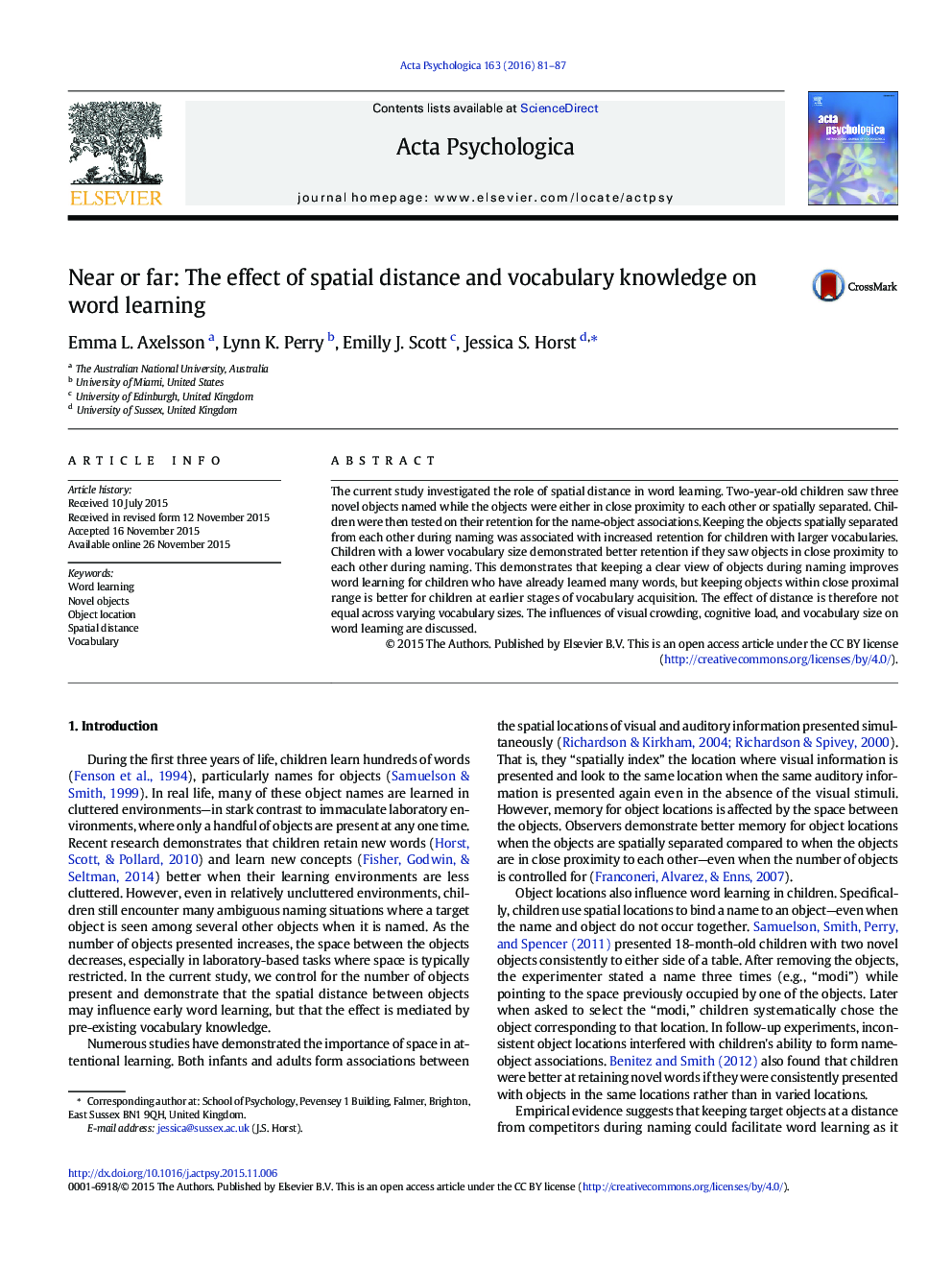| Article ID | Journal | Published Year | Pages | File Type |
|---|---|---|---|---|
| 7277139 | Acta Psychologica | 2016 | 7 Pages |
Abstract
The current study investigated the role of spatial distance in word learning. Two-year-old children saw three novel objects named while the objects were either in close proximity to each other or spatially separated. Children were then tested on their retention for the name-object associations. Keeping the objects spatially separated from each other during naming was associated with increased retention for children with larger vocabularies. Children with a lower vocabulary size demonstrated better retention if they saw objects in close proximity to each other during naming. This demonstrates that keeping a clear view of objects during naming improves word learning for children who have already learned many words, but keeping objects within close proximal range is better for children at earlier stages of vocabulary acquisition. The effect of distance is therefore not equal across varying vocabulary sizes. The influences of visual crowding, cognitive load, and vocabulary size on word learning are discussed.
Related Topics
Life Sciences
Neuroscience
Cognitive Neuroscience
Authors
Emma L. Axelsson, Lynn K. Perry, Emilly J. Scott, Jessica S. Horst,
